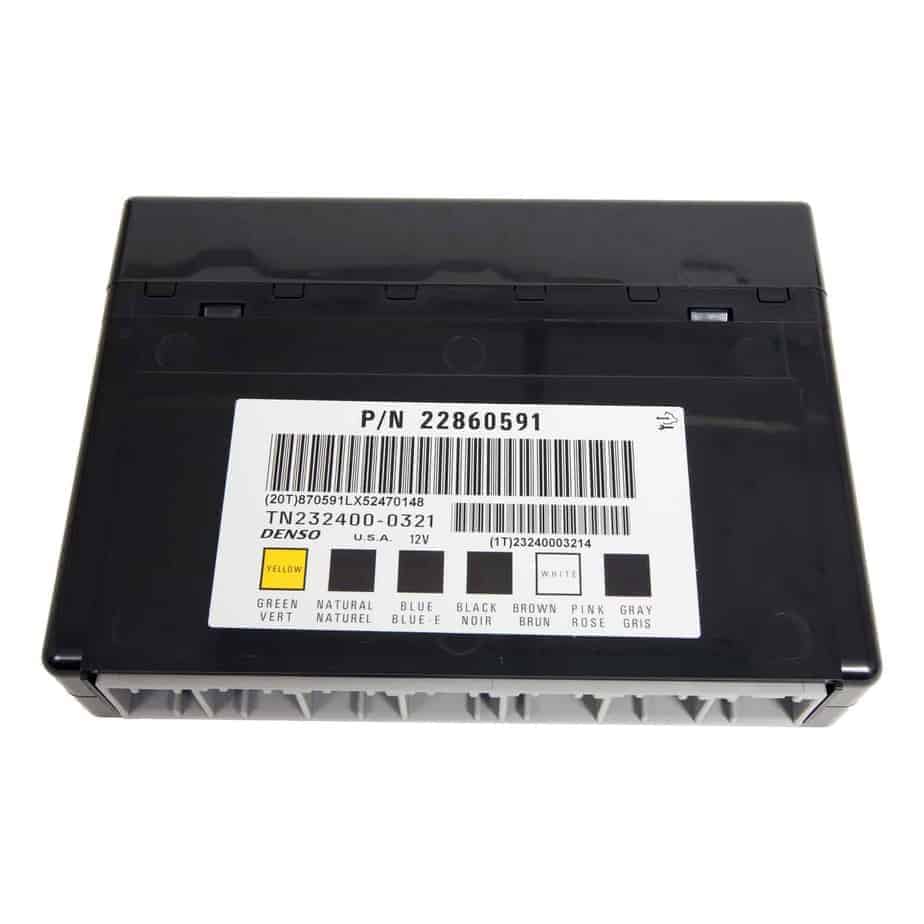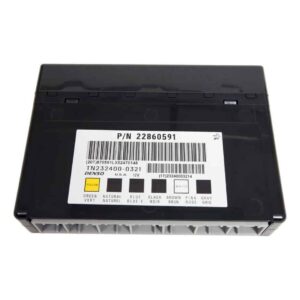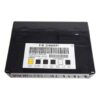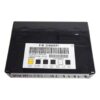Restore Full Functionality to Your GM Vehicle
Are you battling frustrating electrical gremlins in your 2010 Tahoe? Flickering lights, malfunctioning power windows, a temperamental security system, or even a no-start condition can often be traced back to a single, vital component: the Body Control Module (BCM). As the central nervous system for your vehicle’s electronics, a failing BCM can create a cascade of confusing and unpredictable problems. I’ve seen it hundreds of times in my shop—what appears to be multiple, unrelated failures is actually one faulty module.
This isn’t just a replacement part; it’s a complete, hassle-free solution. We offer a professional Cloning Service with this Body Control Module. This means we transfer all the critical data from your original BCM directly to this replacement unit. The result? A true plug-and-play installation. You avoid expensive dealership programming fees and the lengthy process that comes with it. We simply need your vehicle’s VIN to load the latest GM software updates, ensuring optimal performance and compatibility before it even ships.
From the Technician’s Bench: The Case of the Haunted Tahoe
A customer brought in their 2010 Tahoe last month, convinced it was possessed. The dome lights would stay on, the radio would randomly shut off, and the ‘Service StabiliTrak’ message kept appearing. They had already replaced the battery and checked the alternator. After hooking up my scan tool, I saw a series of communication error codes (U0140, U0155) pointing to a network issue. Instead of chasing ghosts in the wiring, my experience pointed straight to the BCM. Once we installed a cloned module, every single issue vanished. It’s a classic scenario where one failing component mimics a dozen different problems.
Is Your Vehicle Showing These Telltale Signs?
A failing BCM doesn’t always trigger a check engine light, making it tricky to diagnose. Here are common symptoms I’ve seen that point to a faulty 2010 Tahoe Body Control Module:
- ✔ Erratic or non-functional interior/exterior lights (headlights, dome lights, dash lights).
- ✔ Power windows, locks, or mirrors working intermittently or not at all.
- ✔ The security system engaging randomly or preventing the vehicle from starting (anti-theft light on).
- ✔ Unexplained battery drain that leaves you with a dead battery overnight.
- ✔ Instrument cluster gauges behaving erratically or going dead.
- ✔ Communication error codes stored, such as U0140 (Lost Communication With Body Control Module).
- ✔ Wipers or climate control functions not responding correctly.
Your Straightforward BCM Installation Guide
Installing your cloned BCM is a manageable task for a confident DIYer. For the 2010 Tahoe, the BCM is typically located under the driver’s side of the dashboard, near the steering column.
- Safety First: Always disconnect the negative terminal from your vehicle’s battery and wait 10-15 minutes to allow all systems to power down completely.
- Locate the BCM: On the Tahoe, you’ll likely need to remove the lower dash panel beneath the steering wheel to gain access. It’s a black box with several large electrical connectors.
- Disconnect and Remove: Carefully unplug all wiring harnesses from the old BCM. They have locking tabs that need to be depressed. Once disconnected, unbolt or unclip the module from its mounting bracket.
- Install the New Module: Mount your new, cloned BCM in the same location and securely reconnect all wiring harnesses. You should hear a ‘click’ as they lock into place.
- Reconnect and Test: Re-attach the negative battery terminal. Turn the key to the ‘On’ position and test all body functions—windows, locks, lights, wipers, etc.—to confirm the repair.
Important Post-Installation Steps
Our cloning service handles the vast majority of the setup, but some vehicle systems may require a quick handshake with the new module. Please be aware of the following potential procedures:
- Airbag System Sync: If the airbag light is on after installation, a ‘Setup SDM Primary Key in BCM’ relearn is needed. This requires a professional-grade scan tool to sync the modules.
- Brake Pedal Position Relearn: On some models, this procedure may be necessary to ensure brake lights and stability control systems function as intended.
Disclaimer: Procedures can vary. Always refer to a factory service manual for your specific vehicle if you are unsure.
Verified Fitment Across a Wide Range of GM Vehicles
This Body Control Module is a direct replacement for part number 15299986 and is compatible with a wide array of GM cars, trucks, and SUVs. Please verify your original part number is on this list. This module fits the following part numbers: 10382479, 15093910, 15276271, 15299986, 15819552, 15828601, 15837419, 15872388, 15872421, 15880684, 15921352, 15921353, 15948438, 15948439, 20815898, 20839063, 20864767, 20864768, 20921435, 20921436, 20935349, 22860591, 25826124, 25826125, 25847588, 25847589, 25892622, 25910474, 25934762, 25934763, 95151084. It is also compatible with the models listed below:
Frequently Asked Questions
What exactly is the cloning service?
Cloning is a process where we transfer the essential vehicle-specific data—like key information, mileage, and option configurations—from your original BCM to the replacement unit. This makes the module plug-and-play, eliminating the need for additional programming after installation.
Why do you need my VIN?
We use your Vehicle Identification Number (VIN) to access the official GM database and flash the module with the very latest software updates for your specific vehicle. This ensures maximum stability and performance.
Do I need to send my original BCM to you?
Yes. For the cloning service to work, you must send us your original Body Control Module. We perform the data transfer in our facility and then ship both your original module and the newly programmed replacement back to you.
What happens to my old part? Do you keep it?
We do not keep your original module. Our core return policy is simple: your original part is always returned to you along with the programmed replacement unit. You get to keep it.
Is this a difficult part to replace for a DIYer?
For someone with basic mechanical skills, it’s very manageable. The main challenge is typically accessing the module under the dashboard. Since our unit is pre-programmed, the most difficult part (the software setup) is already done for you.



